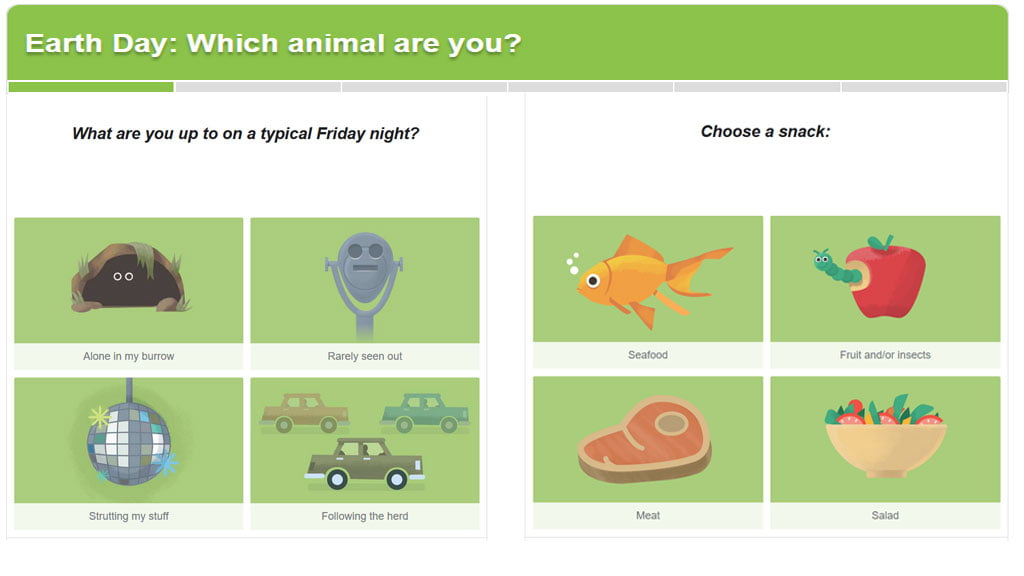Weather trivia offers an exciting and engaging way to learn about the natural world around us. From thunderstorms to tornadoes and everything in between, the world of weather is fascinating, unpredictable, and often mysterious. Whether you’re a weather enthusiast or just someone curious about how the world’s climate works, this article offers a deep dive into some of the most interesting and surprising weather trivia questions and answers.
What Is Weather Trivia?
Weather trivia is a series of questions and answers designed to test your knowledge about weather phenomena, natural disasters, climate patterns, and more. This type of trivia can include a wide range of topics—from basic weather patterns like rainfall and temperature to more complex concepts such as tornadoes, hurricanes, and the science behind meteorology.
If you’re someone who loves to explore the forces of nature, then weather trivia is the perfect way to dive deeper into weather-related knowledge. It’s an enjoyable activity for kids and adults alike, and it can also be a fun and educational game for groups, classrooms, or family gatherings.
Weather Trivia Questions and Answers
Here are 101 weather trivia questions and answers, categorized for easy reference:
General Weather Knowledge
Question: What is the study of weather called?
Answer: Meteorology
Question: Which atmospheric layer contains most of the Earth’s weather?
Answer: The Troposphere
Question: What is the name of the scale used to measure the strength of tornadoes?
Answer: The Fujita Scale
Question: What type of cloud is associated with thunderstorms?
Answer: Cumulonimbus
Question: Which gas makes up the majority of Earth’s atmosphere?
Answer: Nitrogen
Question: What phenomenon causes the Earth’s weather patterns?
Answer: The Sun’s energy
Question: What is the main difference between weather and climate?
Answer: Weather refers to short-term atmospheric conditions, while climate refers to long-term patterns.
Question: Which type of cloud is typically the lowest type of cloud?
Answer: Stratus
Question: What does a barometer measure?
Answer: Atmospheric pressure
Question: What is a common consequence of high humidity?
Answer: Heat index increases, making it feel hotter.
Clouds and Cloud Formation
Question: What type of cloud is fluffy and white, often seen on sunny days?
Answer: Cumulus
Question: What are clouds made of?
Answer: Tiny droplets of water or ice crystals
Question: What cloud type forms at very high altitudes and appears wispy?
Answer: Cirrus
Question: What cloud type is associated with overcast weather?
Answer: Stratus
Question: What type of clouds bring rainy weather?
Answer: Nimbostratus
Question: What is the cloud called that forms a thunderstorm?
Answer: Cumulonimbus
Question: What is the term for a group of clouds?
Answer: Cloud formation
Question: What are lenticular clouds typically associated with?
Answer: Mountain ranges and wind patterns
Question: What type of clouds are highest in the sky?
Answer: Cirrostratus
Question: What does the “alto” in cloud names like altostratus and altocumulus refer to?
Answer: The clouds are at a middle altitude, between 2,000 and 7,000 meters.
Storms and Severe Weather
Question: What is the strongest type of storm?
Answer: A hurricane
Question: What scale is used to classify hurricanes?
Answer: The Saffir-Simpson Scale
Question: What causes a tornado to form?
Answer: A combination of warm, moist air and cool, dry air creating instability.
Question: What is the term for the calm center of a hurricane?
Answer: The Eye
Question: Which state in the U.S. experiences the most tornadoes?
Answer: Texas
Question: What is a storm surge?
Answer: A rise in sea level caused by a hurricane’s winds pushing water toward the shore.
Question: What is the most common time of year for hurricanes to form?
Answer: Late summer and early fall
Question: What is the term for a thunderstorm that produces a tornado?
Answer: A supercell
Question: Which storm is known for its spinning vortex and can cause devastating winds?
Answer: A tornado
Question: What is the most common form of severe weather in the U.S.?
Answer: Thunderstorms
Precipitation
Question: What is the difference between sleet and hail?
Answer: Sleet is ice pellets that form in the atmosphere, while hail is larger and forms inside thunderstorms.
Question: What is the name of the process in which water vapor turns into liquid?
Answer: Condensation
Question: Which form of precipitation is characterized by frozen water droplets?
Answer: Hail
Question: What type of precipitation forms when the temperature is below freezing?
Answer: Snow
Question: What is the term for rain that falls during cold temperatures, forming ice on surfaces?
Answer: Freezing rain
Question: What is the average size of a snowflake?
Answer: Between 2 and 5 millimeters in diameter
Question: What does the term “drizzle” refer to?
Answer: Very light, fine rain
Question: What type of precipitation occurs when the ground temperature is above freezing, but the upper atmosphere is very cold?
Answer: Sleet
Question: What is the term for when moisture in the air condenses and falls to Earth as water?
Answer: Precipitation
Question: What are rainbows caused by?
Answer: The refraction and dispersion of light through water droplets.
Wind and Atmospheric Pressure
Question: What is the Coriolis effect?
Answer: The deflection of moving objects due to Earth’s rotation.
Question: What is a prevailing wind?
Answer: Winds that consistently blow from a specific direction over a large area.
Question: What is the term for the wind that blows from the sea to the land?
Answer: Sea breeze
Question: What does an anemometer measure?
Answer: Wind speed
Question: What type of wind blows from the land to the sea?
Answer: Land breeze
Question: What is a jet stream?
Answer: A fast-moving narrow air current in the atmosphere.
Question: What pressure system is associated with clear, calm weather?
Answer: High pressure
Question: What pressure system is associated with stormy weather?
Answer: Low pressure
Question: What type of wind is created by temperature differences between the land and water?
Answer: Local winds (e.g., sea breeze)
Question: What is the term for a wind that blows from a specific direction consistently for long periods?
Answer: Trade winds
Temperature and Climate
Question: What is the average temperature of the Earth’s surface?
Answer: About 59°F (15°C)
Question: What is the difference between temperature and heat?
Answer: Temperature is the measure of the warmth of an object, while heat refers to the transfer of energy.
Question: What term is used to describe the Earth’s warming due to increased greenhouse gases?
Answer: Global warming
Question: What is the name of the phenomenon that causes the Earth’s seasons?
Answer: The tilt of the Earth’s axis
Question: Which climate zone is characterized by long, cold winters and short, cool summers?
Answer: The Subarctic
Question: What is the hottest temperature ever recorded on Earth?
Answer: 134°F (56.7°C) in Furnace Creek Ranch, California, USA, in 1913.
Question: What is the term for the boundary between two air masses of different temperatures?
Answer: A front
Question: What is the effect called when mountains block the movement of air masses?
Answer: The rain shadow effect
Question: What is the term for a long-term average of weather patterns in a region?
Answer: Climate
Question: What is the term for the gradual change in the climate of Earth over time?
Answer: Climate change
Extreme Weather Events
Question: What is a “supercell” storm?
Answer: A severe thunderstorm with a rotating updraft.
Question: What is the deadliest weather event on Earth?
Answer: Heatwaves
Question: What is the term for a large, rotating storm system that forms over warm tropical oceans?
Answer: A tropical cyclone (hurricane/typhoon)
Question: How fast can the winds of a category 5 hurricane reach?
Answer: Over 157 mph (252 km/h)
Question: What is the name of the hurricane season in the Atlantic Ocean?
Answer: The Atlantic Hurricane Season (June 1 to November 30)
Question: What is the term for a region that experiences very little precipitation, often leading to drought conditions?
Answer: Desert
Question: What type of severe weather produces both lightning and thunder?
Answer: Thunderstorms
Question: What is the term for a large tornado outbreak that affects many areas at once?
Answer: A tornado super outbreak
Question: What is a common effect of extreme droughts on a region?
Answer: Water shortages
Question: What natural disaster is caused by the displacement of water?
Answer: Tsunami
Famous Weather Events
Question: What was the name of the famous 1993 snowstorm that affected the United States?
Answer: The Storm of the Century
Question: Which hurricane struck the Gulf Coast of the United States in 2005?
Answer: Hurricane Katrina
Question: In what year did the “Great Blizzard” hit the United States?
Answer: 1888
Question: Which event is known as the deadliest natural disaster in U.S. history?
Answer: The 1900 Galveston Hurricane
Question: What year did Mount St. Helens erupt, causing significant weather changes in the region?
Answer: 1980
Question: Which European country was hit by the 2003 heatwave that caused thousands of deaths?
Answer: France
Question: What year did the devastating 2011 Joplin tornado strike Missouri?
Answer: 2011
Question: Which country experiences the worst tropical cyclones annually?
Answer: The Philippines
Question: What year did the Tohoku earthquake and tsunami occur in Japan?
Answer: 2011
Question: What is the name of the weather event that led to the Dust Bowl in the 1930s?
Answer: Drought and poor farming practices
Fun Weather Facts
Question: What is the coldest temperature ever recorded on Earth?
Answer: -128.6°F (-89.2°C) at Vostok Station in Antarctica
Question: What was the longest thunderstorm ever recorded?
Answer: A thunderstorm in the Amazon rainforest lasted for over 7 hours.
Question: What is the strongest tornado on record?
Answer: The EF5 tornado that hit Moore, Oklahoma, in 2013
Question: What is the largest recorded hailstone in the U.S.?
Answer: 8 inches (20.3 cm) in diameter, found in South Dakota in 2010
Question: What is the average annual snowfall in the city of Syracuse, New York?
Answer: 115 inches (292 cm)
Question: What’s the fastest wind speed ever recorded on Earth?
Answer: 253 mph (407 km/h) during Cyclone Olivia in 1996.
Question: What is the term for a small-scale weather event, like a local storm or tornado?
Answer: Microclimate
Question: What is the highest recorded temperature in Africa?
Answer: 136°F (58°C) in Libya
Question: What is the most common cause of death during a thunderstorm?
Answer: Lightning strikes
Question: What is the term for the first frost of the season?
Answer: Fall frost
Ocean and Weather
Question: What is the El Niño phenomenon?
Answer: A periodic climatic event where sea surface temperatures rise in the central and eastern Pacific Ocean.
Question: What does La Niña refer to?
Answer: A climate phenomenon that causes cooler than average sea surface temperatures in the central and eastern Pacific Ocean.
Question: What is the name of the cold ocean current that flows along the western coast of South America?
Answer: The Humboldt Current
Question: How does the Gulf Stream affect the climate of Europe?
Answer: It warms the climate, leading to milder winters in Europe.
Question: What causes the “ocean breeze” effect?
Answer: Differences in temperature between land and water, causing air to flow from the sea to the land.
Question: What does a monsoon bring to certain regions?
Answer: Heavy seasonal rainfall
Question: What is the primary source of moisture for tropical cyclones?
Answer: Warm ocean water
Question: What is the phenomenon called when ocean temperatures rise above normal?
Answer: El Niño
Question: What is the Pacific Decadal Oscillation?
Answer: A long-term climate pattern of ocean temperature shifts in the Pacific Ocean.
Question: What type of ocean current is responsible for regulating Earth’s climate?
Answer: Thermohaline circulation
Question: How does the warm water of the Gulf Stream influence the climate of Western Europe?
Answer: It makes the climate milder than other areas at similar latitudes.
Table of Weather Phenomena
Let’s break down some key weather phenomena with a table to better understand how each one works.
| Weather Phenomenon | Description | Examples |
|---|---|---|
| Tornado | A rotating column of air that forms in thunderstorms. | EF5 Tornado in Oklahoma, 2013 |
| Hurricane | A large, swirling storm with high winds and heavy rains. | Hurricane Katrina, 2005 |
| Drought | A prolonged period of low rainfall, leading to a water shortage. | Dust Bowl (1930s), California Drought |
| Thunderstorm | A rainstorm with lightning and thunder, caused by warm, moist air rising rapidly. | Severe Thunderstorm in the Midwest, 2020 |
| Flood | Overflow of water onto land that is usually dry. | 2010 Pakistan Floods |
| Heatwave | A prolonged period of excessively hot weather. | European Heatwave, 2003 |
| Blizzard | Severe snowstorm with strong winds, low visibility, and cold temperatures. | Blizzard of 1888 (USA) |
| Tornado Alley | A region in the U.S. known for frequent tornado activity. | Oklahoma, Kansas, Texas |
| Fog | A cloud at ground level reducing visibility. | San Francisco Bay Area |
| Lightning | A sudden electrostatic discharge during a thunderstorm. | Florida, “Lightning Capital” |
The Science Behind Weather
Understanding weather requires a basic understanding of several important scientific concepts. These include air pressure, humidity, temperature, wind, and the Earth’s atmosphere.
Air Pressure and Weather
Air pressure refers to the weight of the air above us, which exerts pressure on everything below. Low air pressure usually brings stormy weather, while high pressure is associated with clear, calm conditions.
Humidity and Its Effects
Humidity is the amount of water vapor in the air. High humidity can make the temperature feel hotter than it actually is, while low humidity can cause dryness and discomfort.
Temperature and Wind
Temperature affects how warm or cold the air is, and wind is the movement of air caused by differences in temperature and pressure. Together, these factors help determine the weather we experience every day.
More Fun Weather Facts
-
A typical thunderstorm lasts about 30 minutes—though some storms can linger longer and produce more intense conditions.
-
Lightning strikes the Earth 100 times per second, which is about 8 million times per day.
-
Polar vortex refers to a large area of low pressure and cold air that surrounds the North and South Poles. Occasionally, this vortex can weaken, sending cold air into lower latitudes.
FAQs About Weather Trivia Questions and Answers
To make sure you’re ready for any trivia competition, here’s a list of additional questions you might face.
Q1: What’s the difference between a hurricane, a typhoon, and a cyclone?
A1: The difference lies in the location. Hurricanes occur in the Atlantic and northeastern Pacific, typhoons are found in the northwestern Pacific, and cyclones occur in the South Pacific and Indian Ocean.
Q2: Why do we have seasons?
A2: Seasons are caused by the Earth’s tilt on its axis. As the Earth orbits the sun, different parts of the Earth receive varying amounts of sunlight, leading to seasonal changes.
Q3: What is the “Eye” of a hurricane?
A3: The eye is the calm center of a hurricane, characterized by clear skies and light winds. It is surrounded by the storm’s most intense winds and rain.
Q4: What is hail made of?
A4: Hail is made of frozen water droplets that grow in size as they are lifted into cold areas of the storm. They are then dropped when they get too heavy.
Q5: How can weather forecasts predict the weather?
A5: Weather forecasts rely on advanced meteorological tools, such as satellite images, radar, and computer models, to track atmospheric conditions and predict future weather patterns.
Conclusion
Weather trivia serves as an excellent way to engage with the world of meteorology in a fun and educational way. It helps people understand the science behind weather phenomena, while also offering a sense of awe and wonder about the planet we live on. So the next time you’re watching a weather report or experiencing a storm, you’ll be equipped with fascinating facts that make the weather even more intriguing.



